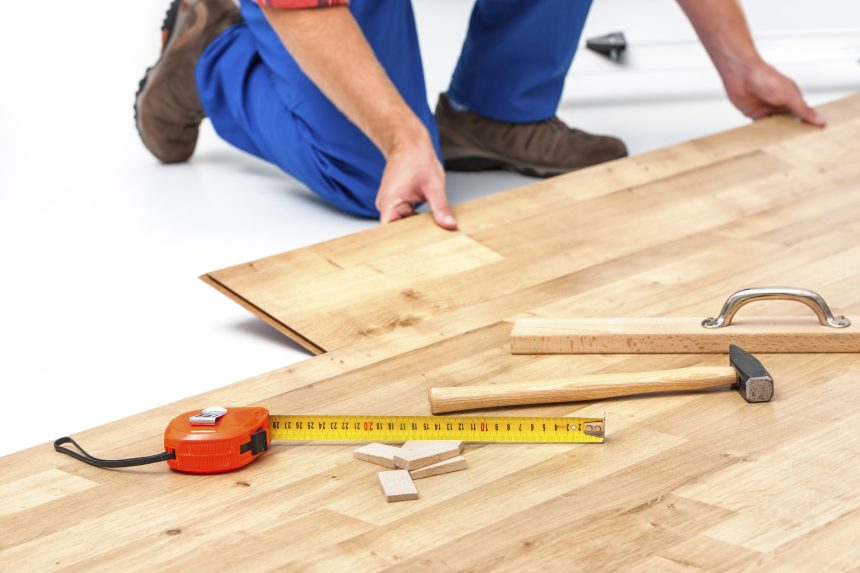Renovating specific areas of a single-family house offers homeowners an excellent opportunity to enhance the functionality and aesthetics of their property while leveraging someone else’s investment. By selecting the right remodeling project, a substantial portion of the expense can be translated into increased property values, benefiting future owners. This strategic approach not only improves the living space for current homeowners but also serves as a valuable investment for the long-term, maximizing the return on the renovation expenditure.
What to Consider Before Renovating
The return on investment (ROI) of a renovation project depends on several factors, including local market conditions, the state of the real estate market during the property sale, and the quality of the work done. Certain projects, such as adding a wood deck, kitchen and bathroom upgrades, and window replacements, have historically shown the highest ROI, regardless of the property’s location or market conditions.
However, unless a remodeling project addresses structural issues or design flaws, it is unlikely for a homeowner to recoup more than the construction costs. If cost recovery is a significant concern, homeowners should consider potential buyers’ preferences when choosing which projects to pursue, balancing increased enjoyment with the potential for added value.
For investors remodeling rental properties, the costs of improvements can be recovered not only through increased property value at sale but also through higher rental rates for updated residences.
Nonetheless, homeowners should exercise caution in selecting projects, as the value gains can only be realized if there are buyers willing to pay for the renovations. Additionally, investors must ensure that any new additions fit seamlessly into the existing space, which can be aided by utilizing the best home design software available. Proper planning and consideration of market demands are essential for maximizing the ROI of renovation projects.
Consider Your Location
When considering any home improvement project, it is crucial to ensure that the enhancements are appropriate for the specific type of dwelling and the local property area. One common mistake made by homeowners is investing in improvements that far exceed the average for neighboring houses. While a house with extensive upgrades may still attract interest among potential buyers, it is unlikely to command a premium well above the average value solely based on those extra improvements.
Real estate agents are knowledgeable about the fluctuating trends in percentage value increases for homes in various neighborhoods. They understand that during periods of heightened economic activity and increased real estate demand, improvements will have the most significant impact on a home’s market value.
The lasting impact of improvements on property values can also vary with time. Structural or design improvements, such as building additions or finishing raw spaces, tend to add value for a more extended period compared to updates to kitchens, bathrooms, or technological enhancements like air conditioning systems, which may become outdated over time.
Moreover, the geographic location plays a significant role in determining the quickest or most substantial payback from home improvement projects. For instance, in-ground swimming pools may not yield a favorable return on investment due to their maintenance costs in some regions. However, in areas with extended periods of scorching weather, such as the southern regions of the U.S., swimming pools can be seen as valuable additions, enhancing the overall appeal and value for certain homeowners.
How the Government Can Help
Thanks to the deductibility of mortgage interest from income taxes, home improvement costs can be further subsidized by Uncle Sam, making the burden of construction less onerous for property owners.
For those who are less risk-averse and have built up sufficient equity in their homes, there are financial instruments available, such as cash-out refinances or home-equity loans, that can be used to finance their construction projects. By utilizing these methods, the only upfront cash required to complete the planned projects would be the interest payments to maintain the loans, which are typically tax-deductible in most cases. The principal amount borrowed can be repaid when the property is eventually sold, providing homeowners with flexibility and an opportunity to leverage their accumulated equity for necessary home improvements.
Project Returns on Investment
The primary motivation for undertaking any home remodeling project as an owner-occupant is the joy and satisfaction derived from living in an updated and improved home. However, for those seeking to profit from their remodeling endeavors, there are resources available that provide valuable insights into the expected payback on specific projects. One such resource is the annual “Cost vs. Value” report published by REALTOR® magazine, which compares the costs of common remodeling projects with the potential payback that homeowners can anticipate.
The estimates in Table 1 offer a national average, but homeowners can find more tailored information at Remodeling Online, which provides estimates specific to different geographic regions within the U.S. These average payback ranges for the most common remodeling projects give potential sellers a general idea of which projects are more likely to yield a significant portion of their investment upon sale. The variation in average recoveries is attributed to the scope and quality of work performed, with smaller and less impactful projects falling towards the lower end of the range.
By consulting these resources and understanding the potential payback for various remodeling projects, homeowners can make informed decisions about which improvements will provide the greatest return on investment, both in terms of increased enjoyment of their home and potential future gains when it comes time to sell.
| Average Renovation/Remodeling Cost Recovery | |
|---|---|
| Renovation/Remodel | Average Cost Recovery |
| Wood Deck Addition | 80-85% |
| Siding Replacement | 75-83% |
| Minor Kitchen Remodel | 75-83% |
| Window Replacement | 75-80% |
| Bathroom Remodel | 70-78% |
| Major Kitchen Remodel | 70-78% |
| Attic Bedroom Remodel | 65-76% |
| Basement Remodel | 65-75% |
| Two-Story Addition | 65-74% |
| Garage Addition | 60-70% |
Improvements, particularly those involving office and bedroom remodeling, showed the widest recovery ranges, typically ranging from 50% to 70%. The significant variation in these recovery percentages can be attributed to the differences in the size and scope of the renovations and the overall importance of the room in the home’s design. For instance, the recovery percentage might differ significantly between a guest bedroom renovation and a luxurious master suite upgrade, where the latter holds more significant appeal and value to potential buyers.
The Bottom Line
When considering any remodeling project, homeowners should prioritize the value and enjoyment they will gain from the changes over the potential cost recovery from a future sale. However, when comparing two equally beneficial improvements, it is wise for homeowners to consult local real estate guides to determine which projects are more likely to offer a favorable return on investment.
It is essential to keep in mind that larger and more expensive projects do not always guarantee a higher degree of value creation. Home prices are influenced by the preferences and budgets of local property buyers within a specific neighborhood or subdivision. Therefore, the perceived value of renovations can vary based on the tastes and preferences of potential buyers in that particular area.
By considering both the personal enjoyment and potential return on investment for each remodeling project, homeowners can make informed decisions that align with their goals and add value to their property while enhancing their overall living experience.












